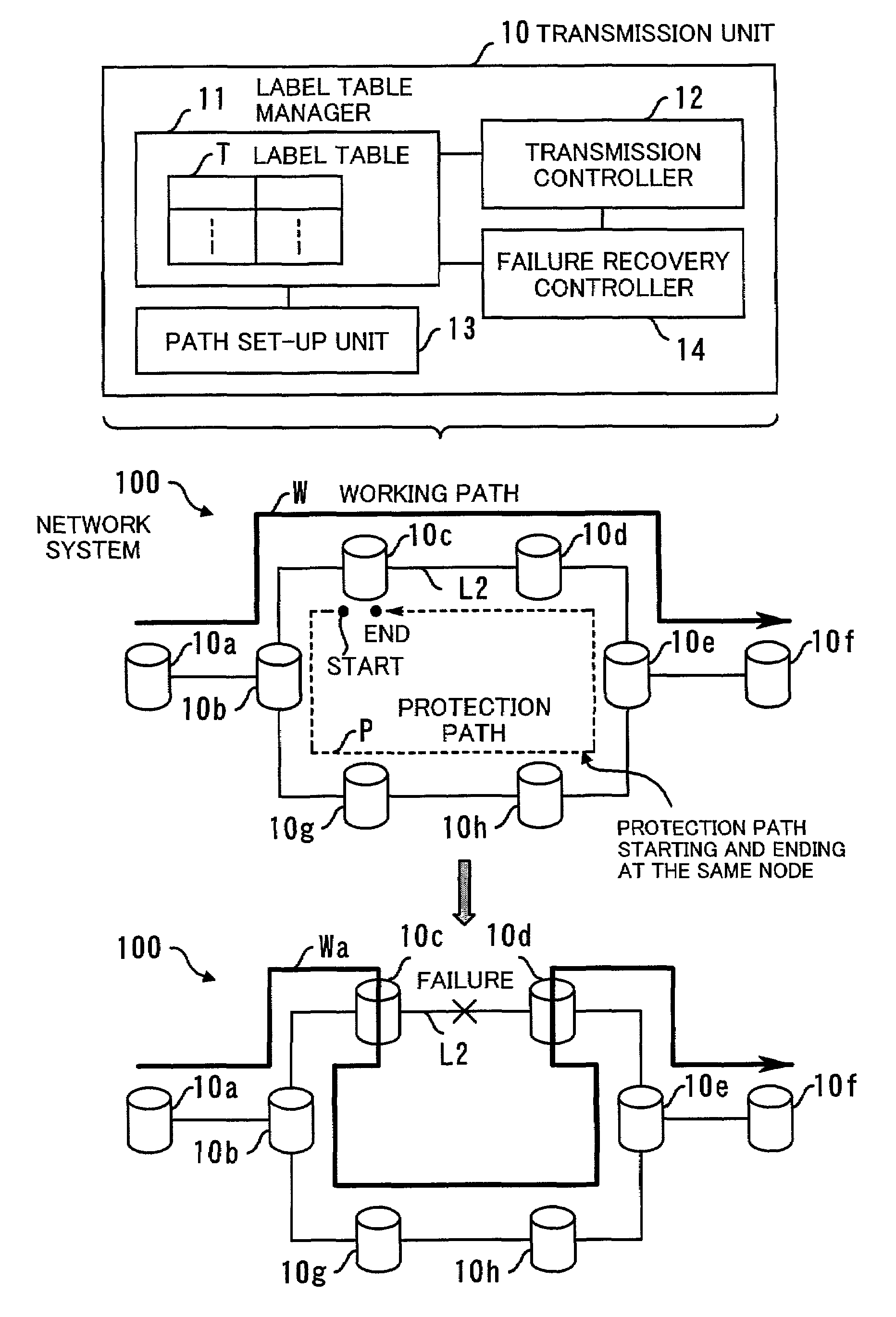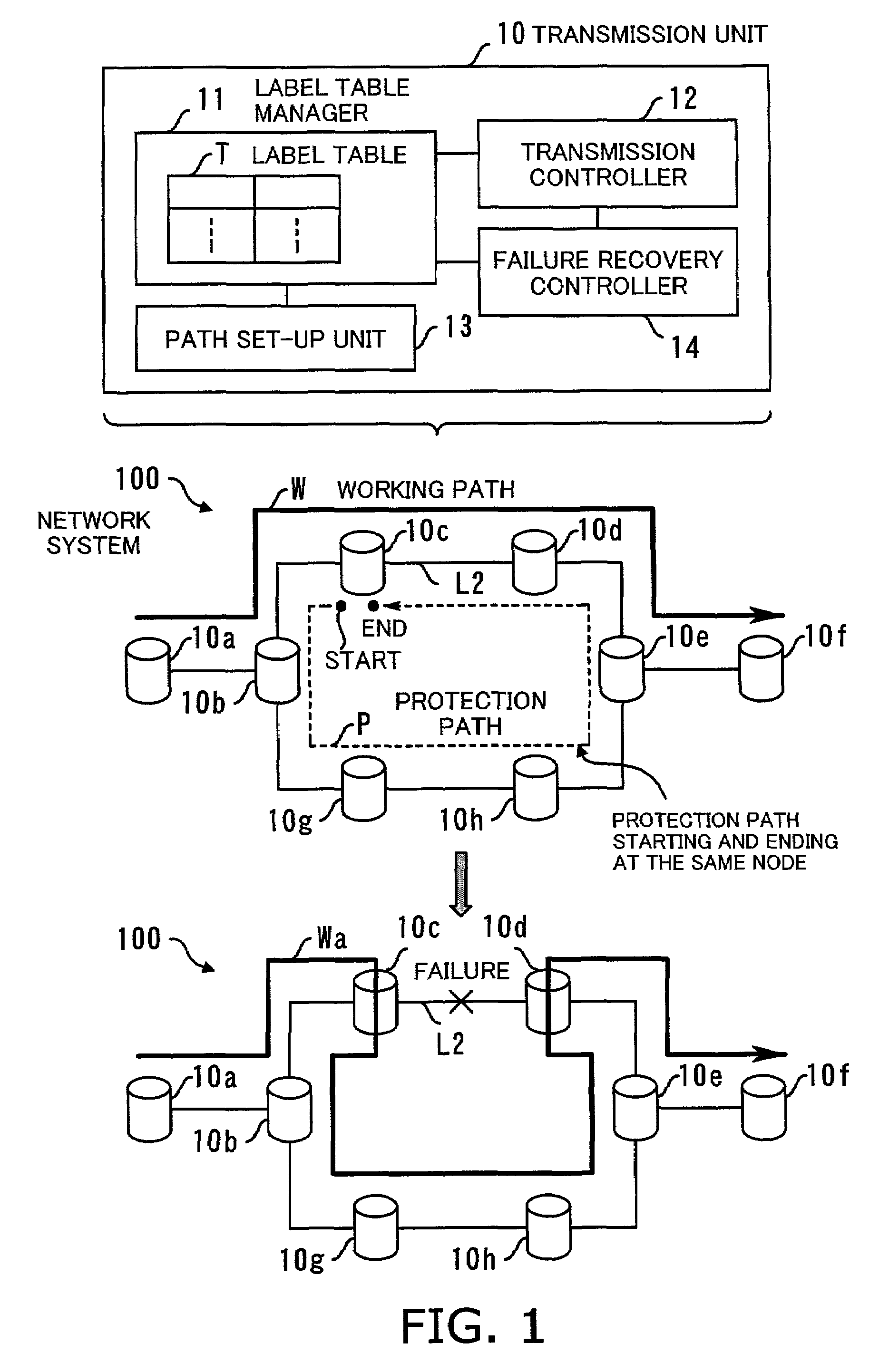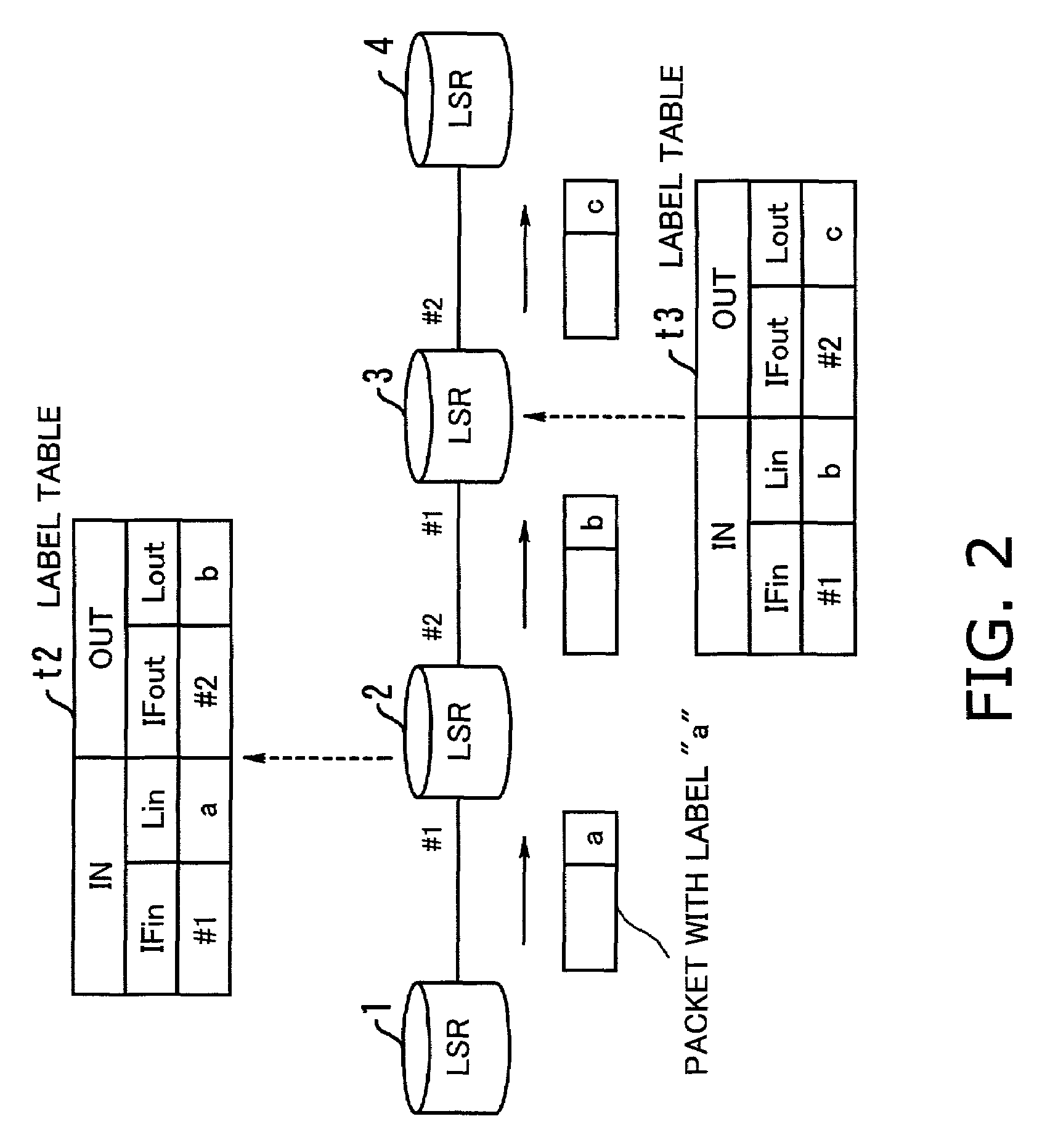Failure control unit
- Summary
- Abstract
- Description
- Claims
- Application Information
AI Technical Summary
Benefits of technology
Problems solved by technology
Method used
Image
Examples
first embodiment
[0031]FIG. 1 is a conceptual view of a transmission unit according to the present invention. The transmission unit 10 is a piece of signal transmission equipment for use in a label-switched network, with the capability of recovering from a link failure. The proposed transmission unit 10 can be applied to packet networks, connection-oriented optical networks such as SONET and SDH, and other communication environments. This description will first discuss MPLS packet routing systems with reference to FIGS. 1 to 20, and then an optical network application with reference to FIG. 21.
[0032]Referring first to the upper half of FIG. 1, the transmission unit 10 comprises the following elements: a label table manager 11, a transmission controller 12, a path set-up unit 13, and a failure recovery controller 14. The transmission unit 10 delivers individual short information messages called packets, using label-switching techniques. Each labeled packet is forwarded from one transmission unit to t...
third embodiment
[0103]While the network system of FIGS. 12 and 13 offers as many protection paths as the number of working paths, it is also possible to reduce the number of protection paths if necessary. In this case, the working paths may be prioritized as in the way explained in FIG. 11.
[0104]Referring next to FIGS. 14 to 17, a fourth embodiment of the present invention will be described. The foregoing three embodiments reconfigure the network to loop back incoming packets at particular LSRs located near the failed link. Those loopback point LSRs, however, would have to perform unnecessary packet routing, consuming extra link resources. To address this issue, the fourth embodiment incorporates a mechanism to eliminate loopback points, if any, when switching a working path W to a protection path P.
fourth embodiment
[0105]FIGS. 14 to 17 show a failure recovery process of the present invention, dividing it into four parts as follows: step S30 in FIG. 14, steps S31 to S33 in FIG. 15, steps S34 to S36 in FIG. 16, and step S37 in FIG. 17. The illustrated network system includes eight LSRs 1 to 8, where a working path W is established along the route of:[0106]LSR 1→LSR 2→LSR 3→LSR 4→LSR 5→LSR 6,
together with one loop-shaped protection path P along the route of:[0107]LSR 3→LSR 2→LSR 7→LSR 8→LSR 5→LSR 4→LSR 3
Label tables are created for those paths through the same procedure as described in the first embodiment.
[0108]Suppose here that a failure has occurred in, for example, the link L3 between the LSRs 4 and 5. The fourth embodiment then deals with this link failure as follows:[0109](S30) The LSRs 4 and 5 detects disruption of the link L3.[0110](S31) The network system executes the same failure recovery process as in the first embodiment. That is, the LSR 4 reroutes the current working path W to the p...
PUM
 Login to View More
Login to View More Abstract
Description
Claims
Application Information
 Login to View More
Login to View More - R&D
- Intellectual Property
- Life Sciences
- Materials
- Tech Scout
- Unparalleled Data Quality
- Higher Quality Content
- 60% Fewer Hallucinations
Browse by: Latest US Patents, China's latest patents, Technical Efficacy Thesaurus, Application Domain, Technology Topic, Popular Technical Reports.
© 2025 PatSnap. All rights reserved.Legal|Privacy policy|Modern Slavery Act Transparency Statement|Sitemap|About US| Contact US: help@patsnap.com



